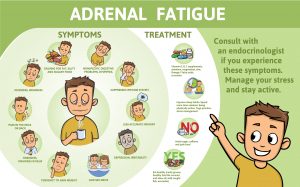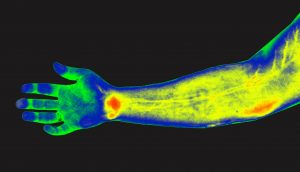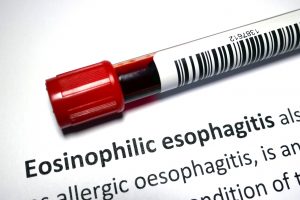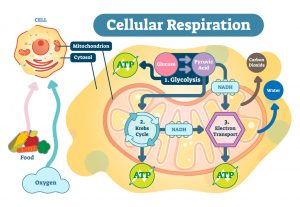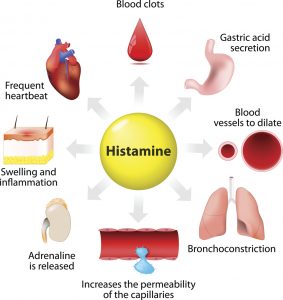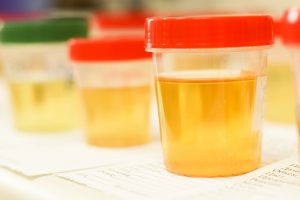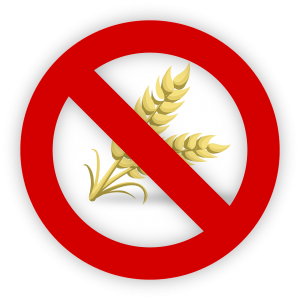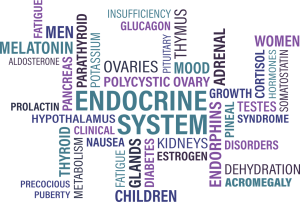
Image by Mary Pahlke from Pixabay
I wanted to explain my thought processes on issues regarding Jessica’s thyroid and endocrine system. Last year in mid to late December we stopped all of Jessica’s supplements for 1 month at the suggestion of pediatrician at the end of this time I noticed some dark circles under Jessica’s eyes. I thought it was related to nutritional deficiencies. We retested her stool and urine as we do every six months or so to track nutritional deficiencies and monitor markers in her stool that had showed a serious candida overgrowth that we have been attempting to get under control ever since and are measuring progress toward digestive balance.
Our D.O. doctor in L.A. suggested testing her thyroid and iron levels because I had reported that Jessica had been having trouble sleeping as told to me by her babysitter and talked of and used the words, “I’m exhausted” in the store while shopping and asked to be put back in the shopping cart so she could rest her head. The teacher at school had also told me that she was saying that she was dizzy.
Because I have had a history of hypothyroid and my lab results had been normal TSH and my OBGYN saw an imbalance between my T3 and reverse T3, and after taking and stabilizing my medication along with other nutritional and health interventions, I was able to get pregnant with my daughter which was much desired. My paternal grandmother was on thyroid medication also, I am not sure of all the details of that except she was on medication for diabetes and a heart condition, I am not sure how all that related to thyroid issues for her. My mother has also recently been told that she should be on thyroid medication and her situation is also a hypothyroid situation with not very far out of range TSH.
There is much debate about TSH being too high or even in what might be considered normal range to an allopathic doctor and almost complete lack of pediatric randomized controlled data on this subject, listen to a quote from Subclinical Hypothyroidism in children: Normal Variation or a sign of a failing thyroid, “There is an almost complete lack of pediatric randomized controlled trial data on this subject so one is obligated to refer to adult studies. The debate over treatment of adult SCH (sub clinical hypothyroidism) has persisted for years, and review articles have been published. In 2001, the Journal of Clinical Endocrinology aired both sides of the debate, with one article taking the position “Subclinical hypothyroidism is mild thyroid failure and should be treated” and the other article stating “The treatment of subclinical hypothyroidism is seldom necessary.”
Chris Kresser, M.S., L.Ac., is one of the most respected clinicians and educators in the fields of Functional Medicine and ancestral health and has trained over 1,300 health professionals around the world in his unique approach. Co-director of the California Center for Functional Medicine, says, “The lab ranges for TSH, T4, and other thyroid markers are based on a bell curve of values collected from people who go to labs for testing. Unfortunately, most people who go to labs to have bloodwork done are struggling with health issues. This means that the ‘normal’ ranges for TSH and T4 are based not on values shown to promote optimal health, but rather on a range of values collected from a sick population. For this reason, it is crucial that we use functional ranges rather than standard ranges when assessing the thyroid status of our patients.” http://kresserinstitute.com/why-your-normal-thyroid-lab-results-may-not-be-normal/
Chris talks about five thyroid patterns that according to him, “tend to respond poorly to conventional thyroid hormone replacement.” He says its important to identify and address the underlying causes specific to each pattern. Reading this medical professional’s website is what made me realize that maybe we should look a little deeper as to why Jess may have had not only the little dark circles under her eyes but why she was having trouble with fatigue and dizziness. Dr. West did test her ferritin and iron which she said, “were a little low.” And she also said we would look into things further if they did not improve with the thyroid medication.
Before he lists the five patterns he says, “Thyroid physiology is complex and regulated by input from multiple endocrine glands, the immune system, the gut, and many cell signaling molecules. Malfunctions in any one of these components can cause hypothyroid symptoms. However, these malfunctions are not revealed by a standard thyroid panel. Patients with hypothyroid symptoms but ‘normal’ TSH and T4 according to the standard thyroid panel may be told that nothing is wrong with their thyroid glands and sent on their way. Some are handed prescriptions for thyroid hormone replacement. This one-size-fits-all approach to managing hypothyroidism ignores the multitude of factors that influence thyroid function and may even worsen symptoms in some patients. At best, it does our patients a disservice, and at worst it could be considered sheer negligence.”
As you know because a lactoferrin marker showed up on Jessica’s stool test more than once I always have that in the back of my mind as a possibility as to why she continues to have other seemingly unrelated symptoms. We did her first stool test when she was 19 months old. At the time she had a dysbiotic overgrowth of Candida parapsilosis in her digestive tract. Another test about 10 months later showed that Candida had resolved, but microscopic yeast had crept from None to Few. Jessica still has Candida in her stool as of Feb 2020, but it is in the “normal Flora” range while microscopic yeast is Rare. So Jessica has made significant progress, albeit by way of great effort.
These are the five patterns.
1. Hypothyroidism caused by pituitary dysfunction…he says this is caused by high cortisol. Cortisol in turn is elevated in response to active infection by a. blood sugar dysregulation, hypoglycemia, insulin resistance, or chronic stress. This set of people would present with hypothyroid symptoms TSH below the functional range (1.8 – 3.0) but within the standard range (0.5 – 5.0) and T4 that is low in the functional range and possibly the standard range as well. The key to correcting this pattern is to resolve the underlying causes of pituitary dysfunction by treating infection, balancing blood sugar, improving insulin sensitivity, and helping patients find ways to reduce their stress levels.
2. Under conversion of T4 to T3 – this has many potential causes, including inflammation, elevated cortisol, nutrient deficiencies, and intestinal dysbiosis. Patients with this pattern have hypothyroid symptoms, normal TSH and low T3. Twenty percent of thyroid hormone activation is initiated in the gastrointestinal tract which produce deiodinase enzymes that convert T4 to T3. Disruption of the normal gut microbiotia may reduce levels of beneficial bacteria that perform this crucial conversion, resulting in a decreased amount of T3 and symptoms of hypothyroidism…chronic inflammation involves the production of inflammatory cytokines, which damage cell membranes and impair thyroid conversion. Chronic fatigue syndrome and Crohn’s disease patients are two examples of patient subsets who may present with ‘low T3’ syndrome due to chronic inflammation. High cortisol, which can become elevated due to chronic inflammation and stress, also suppressed the conversion of T4 to T3. Nutrient status is essential in the pathogenesis of thyroid disorders. Nutrients such as iron and selenium serve as cofactors for enzymes involved in the conversion of T4 to T3. Deficiencies of iron and selenium may reduce T4 to T3 conversion and promote hypothyroidism.
3. Hypothyroidism caused by elevated TBG or thyroid binding globulin which is the protein that transports thyroid hormone through the blood. High levels of TBG reduce levels of free thyroid hormone, causing hypothyroid symptoms. This pattern follows normal TSH and T4, low T3, high T3 uptake and high TBG. Elevated estrogen can raise TBG and cause hypothyroidism.
4. Hypothyroidism caused by decreased TBG – low levels of TBG cause free thyroid hormone levels to rise because there are fewer proteins available to bind thyroid hormones. The high circulating levels of T4 and T3 induce cellular resistance to thyroid hormone, much like how cells develop insulin resistance upon continuous exposure to high levels of insulin. This means that even though there is plenty of thyroid hormone, cells can’t use it. Low TBG can be caused by high testosterone level. This can occur in women with PCOS and insulin resistance. Insulin sensitivity and blood sugar balance need to be restored to treat this pattern of thyroid dysfunction.
5. Thyroid resistance – in this pattern the thyroid and pituitary glands are functioning normally, but thyroid hormones are unstable to get into cells where they are needed. TSH, T3, and T4 are all normal in this pattern. We don’t have a method for testing the function of thyroid hormone receptors on cells a tool that would be helpful, however, testing for HPA axis dysfunction using methods like the DUTCH test may be useful because chronic stress and high cortisol are two key contributors to this pattern.
Tests for the five thyroid patterns
• Comprehensive panel of thyroid markers including TSH, T3, T4, free T3, free T4,
• DUTCH test for assessing HPA axis function: this test can help you determine whether chronic stress and high cortisol are causing pituitary dysfunction, under conversion
of T4 to T3, or thyroid hormone resistance.
• Estrogen and testosterone
• Fasting blood sugar and hemoglobin A1c assess blood sugar imbalances and insulin resistance
• Ferritin and serum selenium to identify deficiencies
• Assess gut health – stool testing, hydrogen breath test for SIBO, urine organic acid profile to identify potential gut infections and dysbiosis.
http://kresserinstitute.com/why-your-normal-thyroid-lab-results-may-not-be-normal/
Even though Jessica’s growth does not seem to be affected right now proper amounts of thyroid are important to it as well as brain development, “Severe acquired hypothyroidism can result in slow growth and short stature…thyroid hormone is important for brain development in young children, the effect of SCH and its treatment on cognitive development would be of interest.” Subclinical Hypothyroidism in Children: Normal Variation of Sign of Failing Thyroid Gland?
Some physicians want to treat right away and some want to monitor from the same article as above, “In the absence of any evidence that treatment of SCH in children is beneficial, some clinicians take the view that since severe untreated OH can cause developmental delay in newborns and slowing of growth in older children, one should err on the side of caution. This view is summarized in a 2007 commentary, proposing that thyroid antibodies and ultrasound can be performed in all children with SCH and that ‘because the potential harm of early treatment appears to be so minor and limited, it seems prudent to err on the side of provisional diagnosis and early treatment rather than wait until sufficient information is available to determine the issue of whether to treat or not.’” There are also, “no consensus on management” of subclinical hypothyroidism in children which is defined as normal total or free T4 and mildly elevated TSH which this study says is between 5-10 but functional medicine uses a lower number. The numbers used by Dr. Isabella Wentz is called The Thyroid Pharmacist and author of The Root Cause outlines how she healed herself of Hashimotos thyroiditis and talks extensively about thyroid issues on her website https://thyroidpharmacist.com/about/. The range she talks about for optimal TSH is 0.5 – 2. The standard range is .4 – 5.5.
It was through functional medicine that I was able to get my health back in a functional way and have a baby at age forty-four. A definition of functional medicine from www.functionalmedicine.org is “Functional medicine addresses the underlying causes of disease, using a systems-oriented approach and engaging both patient and practitioner in a therapeutic partnership.” In the blog where I got that above quote Dr. Wentz talked about how she had just recently attended an event called Advanced Gastrointestinal Conference and listed out a glimpse of the information which caught my eye about IBS, which can be a precursor to autoimmune disease, “Irritable Bowel Syndrome (IBS) is a precursor to autoimmunity and chronic disease.” https://thyroidpharmacist.com/articles/functional-medicine-approach-to-the-thyroid/ Jessica has been diagnosed with that.
Candida alone can be a cause of hypothyroidism as well as multiple other seemingly unrelated things like allergies, chemical sensitivities, eczema, food sensitivities, headaches, joint pain that travels, and autoimmune disease like Crohn’s. see pg. 9 of Conquer Candida and restore your immune system by Jack Tips, N.D. PhD.
Candida, which has been evident in Jessica’s stool labs, can wreak great havoc on the body. Jack Tips also says, “Candidiasis is a major cause of hypoglycemia (low blood sugar) and hypoglycemic symptoms occur because the candida interferes with the enzymes responsible for sugar metabolism. Also, the additional burden that Candidiasis puts on the liver and the adrenal glands means that candida interferes with the whole blood sugar maintenance process. Pg. 119.
I also want to include this remark about respiratory system symptoms because Jessica seems to get a lot of them as did her paternal grandmother, “Since yeast is in every breath of air, respiratory involvement with Candidiasis is quite common. Symptoms such as asthma, sore throat, canker sores, chronic cough, thrush, sinus infections, pneumonia, bronchitis, etc. are all linked to Candidiasis.” Pg. 36
I have also struggled with those types of things off and on my whole adult life getting acutely bad when I turned thirty-seven years old and I was extremely ill from candida and went through a lot to overcome it and it has a tendency to flare in relation to what I eat and drink as well as when I am under stress.
The first article is entitled Emergency management of adrenal insufficiency in children: advocating for treatment options in outpatient and field settings says, “Adrenal insufficiency (AI) remains a significant cause of morbidity and mortality in children with 1 in 200 episodes of adrenal crisis resulting in death.” That was an alarming statement so I read further and saw that an acquired cause of adrenal insufficiency could be caused by several things including barbiturates. This caught my eye because since Jess was 15 months old or so I was taking a medication called Fiorcet (which contains butalbital) for migraine headaches which I have suffered from for years. I had called the Infant Risk Hotline around the time I started taking it and they said the number of headaches I was having and using it for was or would be fairly safe. Because of seeing this article and the very next time I took the medication I stopped breastfeeding because of this which was Christmas eve. I also thought it would be ok since Jess and I both take glutathione which helps detox chemicals and everything in the body. It is especially helpful with Tylenol which is also something I found that I could do to eliminate my need for Fiorcet but I think all of that may have been too much for Jess.
There is quite a long list of reasons for adrenal insufficiency in that study I talked about above and my mediation use would not be the only thing that could contribute to AI. The list that I think could apply to Jess is drug affect (which I talked about above), infection; viral, fungal, inflammatory disorders pg. 3). I was also treated with fluconazole while breastfeeding on more than one occasion because of a yeast breast infection, the article says about fluconazole, “Fluconazole was noted in one of these studies to possibly prolong the duration of AI while another study identified stress and infection to be risk factors.” Pg. 3
This study lists clinical symptoms of AI and say, “fatigue, weakness, tachychardia, hypotension, dizziness, nausea, vomiting, abdominal pain, diaphoresis and seizures. If unrecognized and not treated quickly, AI can progress to coma and death.” Pg. 4
Under the treatment section they talk about what could be causing physiological stress because we know that stress could cause adrenal issues. They say, “While the debate about what constitutes physiological stress is unresolved, several situations are generally accepted as significant stress including: fever > 38oC (100.4oF), intercurrent illness with emesis, prolonged or voluminous diarrhea, infectious disease requiring antibiotics, acute trauma requiring medical intervention (e.g. Fracture) and anesthesia and associated surgical procedures. Guidelines on cortisol requirement in times of physiological stress have been based on the general acceptance that conditions of maximal stress increase the serum levels by 2-3 times.” Pg. 4
I thought the above information could be helpful if she truly did have any type of adrenal issue(s). I hope this sheds light on my initial decision to move forward and treat her thyroid with our D.O. doctor in L.A. and why I stopped breastfeeding in Dec 2019 (was planning to nurse her till mid Apr 2020). We stopped the thyroid medication per our pediatrician’s recommendation and decided to figure out the root cause.
Jess’ thyroid panel numbers have improved since weaning. We ran thyroid panels on Jessica in Nov 2019 (still breastfeeding) and in Feb 2020 (weaned). Thyroxine (T4) Free, Direct, S increased from 1.36 to 1.41 ng/dL. Triiodothyronine (T3), Free remained constant at 3.5 pg/mL. And TSH decreased from 2.610 to 2.030 IU/ml. So, one may conclude that it now requires less stimulation of the thyroid to get slightly better output than before. Clinically, since weaning, Jessica does not complain of tiredness or dizziness, and she no longer has bags under her eyes. This is also a clear indication that my medications, passed via breast milk, did not help Jessica even though the Infant Risk Hotline had said they were OK.
